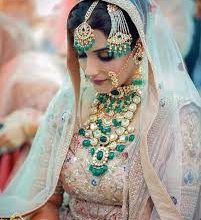Anarkali KurtiDesigner LehengaJaipuri KurtiPunjabi SuitsRajasthani DressesWedding CollectionWedding Dress
15 Points about Ethnic wear that one should know.
FACTS ON ETHNIC WEAR


Ethnic wear refers to traditional clothing worn by people from a specific cultural or religious background. Ethnic wear has a long history, dating back to ancient civilizations. In many cultures, traditional clothing was worn for special occasions and ceremonies, such as weddings and religious festivals.
- Variety: There is a wide variety of ethnic wear, as different cultures have their own unique styles and traditions. Some examples include saris from India, kaftans from the Middle East, and hanboks from Korea.
- Materials: It is typically made from natural materials such as cotton, silk, and linen. These materials are often handwoven or hand-embroidered, adding to the traditional and unique quality of the clothing.
- Tailoring: Ethnic wear is often tailored to the individual, with many pieces made to measure for a perfect fit. This adds to the elegance and beauty of the clothing, and is also a way to ensure that the traditional elements of the design are preserved.
- Significance: Ethnic wear holds deep cultural significance, as it is often passed down through generations and is seen as a way to preserve tradition and cultural identity. It is also a way to show respect for one’s heritage and to celebrate cultural events and festivals.
- Fashion: Ethnic wear has been gaining popularity in the fashion world, with many designers incorporating traditional elements into their collections. This has helped to popularize it and has made it more accessible to a wider audience. With the evolution of time, it has also been modernized with new designs, cuts and styles to cater to the younger generation and also to be worn on a daily basis.
- Wearing: It is not restricted to certain occasions, it can be worn on a daily basis or for special events, it depends on the person’s preference.
- Regional Variations: Ethnic wear can vary greatly depending on the region or country of origin. For example, a sari worn in India can vary in style, fabric, and draping depending on the state or community. Similarly, traditional dress in Africa can vary greatly between different tribes and cultures.
- Gender-specific: Many ethnic wear designs are gender-specific and are worn by men or women. For example, in India, the sari is traditionally worn by women, while the dhoti is worn by men.
- Jewelry and Accessories: It is often paired with traditional jewelry and accessories. These can include items such as bangles, earrings, necklaces, and headdresses. These accessories are also a big part of the traditional look and are considered an important aspect of the cultural heritage.
- Color and Symbolism: The colors and symbols used in it can hold special meaning and significance. For example, in Indian culture, red is often worn at weddings as it is considered to be a symbol of love and prosperity.
- Modern Adaptation: Ethnic wear has been adapted to meet the demands of modern life. For example, traditional Indian clothing such as the salwar kameez and the lehenga choli are now available in more comfortable, everyday styles.
- Made-to-Order: Many it designs are made-to-order and can be customized to the client’s specific requirements. This allows for a more personalized and unique look and also helps to preserve traditional techniques and styles.
- Sustainability: With the growing concern for the environment, many traditional techniques and materials used in ethnic wear are considered to be eco-friendly, such as hand-loom and natural dyes.
- Online Shopping: With the growth of online shopping, ethnic wear has become more accessible to people around the world. This has helped to promote cultural awareness and appreciation for traditional clothing and styles.
- Cultural Appropriation: It’s important to be mindful of cultural appropriating when wearing ethnic wear, as it can be considered disrespectful to wear traditional clothing without understanding the cultural significance and meaning behind it.



Ethnic wear is a beautiful and meaningful aspect of many cultures around the world. It holds deep cultural significance and is a way to celebrate heritage and tradition. With its rich history, traditional materials, and unique designs, it is a way to connect to one’s cultural identity and promote cultural awareness and appreciation




